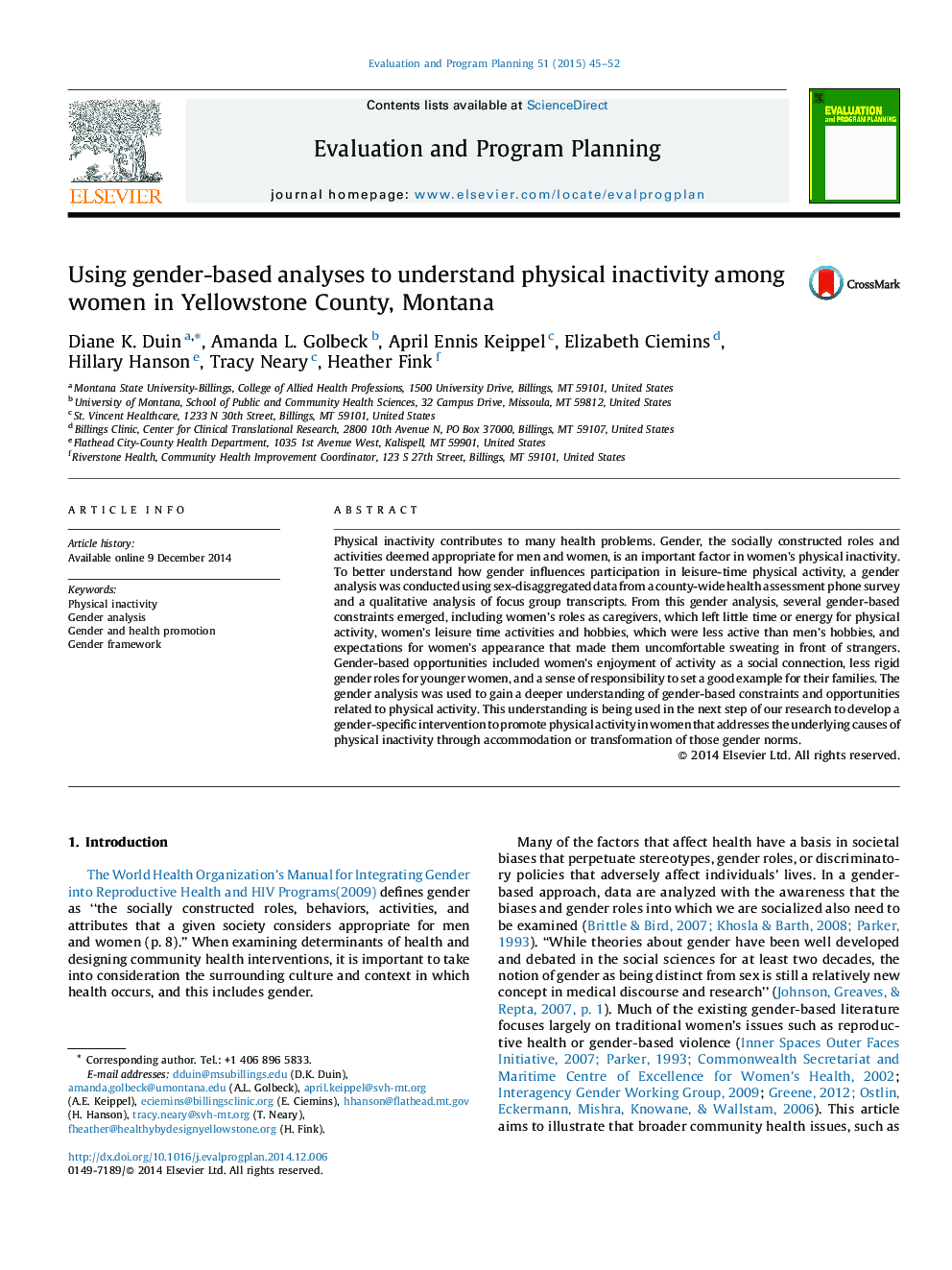| کد مقاله | کد نشریه | سال انتشار | مقاله انگلیسی | نسخه تمام متن |
|---|---|---|---|---|
| 322455 | 540055 | 2015 | 8 صفحه PDF | دانلود رایگان |
• Gender is an important factor in women's physical inactivity.
• Caregiving roles, preferred leisure time activities and hobbies, and expectations for appearance are constraints on women's participation in physical activity.
• Social connection, gender role, and the sense of responsibility to set a good example for family represent opportunities to encourage women's physical activity.
• Health interventions that recognize gender-based opportunities and minimize gender-based constraints can be bolstered in achieving program objectives because underlying gender-based disparities that undermine physical activity are addressed.
Physical inactivity contributes to many health problems. Gender, the socially constructed roles and activities deemed appropriate for men and women, is an important factor in women's physical inactivity. To better understand how gender influences participation in leisure-time physical activity, a gender analysis was conducted using sex-disaggregated data from a county-wide health assessment phone survey and a qualitative analysis of focus group transcripts. From this gender analysis, several gender-based constraints emerged, including women's roles as caregivers, which left little time or energy for physical activity, women's leisure time activities and hobbies, which were less active than men's hobbies, and expectations for women's appearance that made them uncomfortable sweating in front of strangers. Gender-based opportunities included women's enjoyment of activity as a social connection, less rigid gender roles for younger women, and a sense of responsibility to set a good example for their families. The gender analysis was used to gain a deeper understanding of gender-based constraints and opportunities related to physical activity. This understanding is being used in the next step of our research to develop a gender-specific intervention to promote physical activity in women that addresses the underlying causes of physical inactivity through accommodation or transformation of those gender norms.
Journal: Evaluation and Program Planning - Volume 51, August 2015, Pages 45–52
